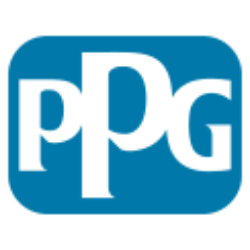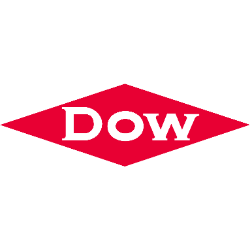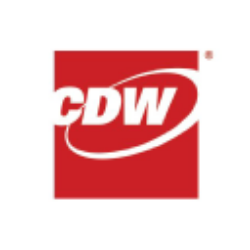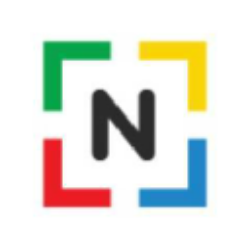Evolution of Competition: UnitedHealth Group Incorporated's Competitive Trends and Market Share Dynamics
UnitedHealth Group (UHG) has solidified its position as a dominant force in the U.S. healthcare landscape, leveraging its diversified business model across UnitedHealthcare (insurance) and Optum (health services). This analysis dissects UHG’s competitive positioning, market share trends, and strategic responses to industry headwinds across key segments.
1. Medicare Advantage (MA): Sustained Market Leadership Amid Funding Pressures
Competitive Dynamics:
- Market Share Growth: UHG added 100,000 MA members during the 2024 Annual Enrollment Period (AEP), despite aggressive competition from rivals like Humana and CVS Health. Full-year 2024 MA membership is projected to reach 450,000–550,000 new enrollees, building on 800,000–900,000 annual additions in 2023.
- Pricing Rationality: UHG’s disciplined pricing strategy avoids "material catch-ups" in future periods, emphasizing stability for seniors. This contrasts with competitors facing margin compression due to underestimating CMS rate cuts and care cost trends.
- 2025 Outlook: UHG’s MA bids for 2025 incorporate 3-year phased CMS funding reductions and Inflation Reduction Act impacts. The company remains confident in maintaining margins within its historical 4–6% range, even as smaller players exit underserved markets.
Key Metrics:
| Metric | 2023 Actual | 2024 Projection | 2025 Outlook |
|---|---|---|---|
| MA Membership Growth | 900,000 | 550,000 | 600,000–700,000 |
| MA Margin Range | 4.5–5.5% | 4.0–5.0% | 4.0–5.5% |
| Value-Based Care Patients | 4 million | 4.75 million | 5.5 million |
2. Medicaid: Stabilizing After Redetermination Turbulence
Market Share Trends:
- Post-PHE Growth: Medicaid membership grew by 570,000 YoY in 2023, driven by wins in Texas, Indiana, and Michigan. However, 2024 saw temporary attrition due to state redeterminations, with stabilization expected in H2 2024.
- State Contract Wins: Recent awards in Massachusetts, Colorado, and Rhode Island position UHG for 5–7% Medicaid enrollment growth in 2025, outpacing industry averages.
Competitive Threats:
- Centene and Molina Healthcare remain aggressive in cost-sensitive markets, but UHG’s integrated Optum analytics platform provides an edge in managing high-acuity populations.
3. Commercial Markets: Balancing Growth and Unit Cost Pressures
Employer Segment Dynamics:
- Membership Growth: UHG added 2.3 million commercial members in H1 2024, driven by demand for:
- Self-funded plans with embedded OptumRx and behavioral health services.
- Tech-driven solutions (e.g., AI-powered UHC app with 100%+ YoY installation growth).
- Pricing Strategy: Commercial pricing reflects 5.5–6.0% medical cost trends, with labor-driven unit costs (e.g., hospital staffing inflation) offset by Optum’s care delivery efficiencies.
Competitive Positioning:
| Competitor | 2023 Commercial Growth | Key Weaknesses vs. UHG |
|---|---|---|
| Cigna | 1.1 million | Limited in-house care delivery |
| Anthem (Elevance) | 1.4 million | Slower digital adoption |
| Aetna (CVS) | 1.0 million | Pharmacy-centric model |
4. Optum: The Growth Engine Reshaping Healthcare Delivery
Market Share Expansion:
- OptumHealth: Revenue surged 32% YoY in 2023, serving 20 million patients (15% in full-risk contracts). By 2025, 750,000+ new patients will enter value-based arrangements.
- OptumRx: Processed 100 million additional scripts in 2023, capturing share from PBMs like Express Scripts through:
- Real-time benefit tools reducing patient costs by 15–20%.
- Specialty drug management programs.
- OptumInsight: $23.6 billion revenue backlog (up 11% YoY) signals dominance in health IT, accelerated by the Change Healthcare integration.
Disruption Response:
The February 2024 Change Healthcare cyberattack caused a $1.90–$2.05 EPS impact but highlighted UHG’s resilience:
- $9 billion in provider loans maintained network stability.
- Change 2.0 platform relaunch in Q2 2024 restored 85% of functionality, with full recovery expected by 2025.
5. Strategic Differentiators Against Competitors
A. Vertical Integration Flywheel
This closed-loop system drives 300+ bps annual cost advantage over non-integrated rivals.
B. Value-Based Care Scale
- 4 million patients in risk-based models (2x Humana’s footprint).
- 50% engagement rate for new MA enrollees vs. 20% industry average.
C. Technology Moats
- AI/ML Adoption: Reduced prior authorizations by 30% via Gold Card program.
- Consumer App Rankings: #1 in App Store/Google Play for health insurance apps.
6. Forward-Looking Threats and Opportunities
Risks:
- Regulatory Pressures: Potential PBM reforms and MA rate scrutiny.
- Provider Consolidation: Rising hospital system leverage in rate negotiations.
Growth Catalysts:
- Dual-Eligible Expansion: Addressing 12 million underserved dual-eligibles through 2025.
- Home Health Scale: LHC Group integration positions UHG as the #2 home care provider.
- Global Capitation: Targeting 25% of OptumHealth patients under full-risk contracts by 2026.
Conclusion: A Structural Leader Fortifying Competitive Moats
UnitedHealth Group’s 13–16% long-term EPS growth target remains achievable through:
- MA share gains (28% market share by 2025).
- Optum’s 8–10% organic revenue growth.
- $20B+ annual M&A firepower to acquire care delivery assets.
While peers struggle with siloed operations, UHG’s $372B revenue base and integrated model make it the healthcare sector’s most durable compounder. Investors should monitor:
- 2025 MA bid margins (August 2024 updates).
- OptumInsight’s backlog conversion rates.
- Medicaid RFPs in Sun Belt states.
This competitive moat, built over two decades, ensures UHG will likely capture 20–25% of industry profit pools through 2030.
What are the key challenges UHG faces in 2025?
1. Medicare Advantage Funding Pressures
- CMS Rate Cuts: Second year of phased 3.5% rate reductions, compounded by Inflation Reduction Act (IRA) provisions targeting drug pricing.
- Risk Adjustment Headwinds: CMS’s stricter documentation requirements may reduce risk score accuracy, impacting revenue.
- Competitive Pricing: Aggressive bids from smaller insurers in low-income markets threaten margin stability.
2. Medicaid Margin Compression
- Acuity-Cost Mismatch: State reimbursement rates lag behind the higher acuity of remaining members post-redeterminations.
- Contract Recompetes: Losses in states like Nevada (2023) highlight vulnerability to cost-focused bidding.
3. Operational Complexities
- Cyberattack Fallout: Ongoing recovery costs from the Change Healthcare breach ($1.9–$2.05 EPS impact in 2024) strain resources.
- Care Activity Inflation: Post-pandemic utilization spikes in elective procedures and behavioral health services.
4. Regulatory Uncertainty
- PBM Reform Legislation: Potential mandates for 100% rebate pass-throughs could reduce OptumRx’s $120B+ annual revenue by 3–5%.
- Transparency Rules: Compliance costs for hospital price transparency and prior authorization reforms.
How does UHG plan to maintain its market share?
1. Medicare Advantage Differentiation
- Benefit Design: Enhanced supplemental benefits (e.g., in-home support, dental/vision) tailored to dual-eligible populations.
- Provider Collaboration: 60% of MA networks now use value-based contracts, improving cost predictability.
- Technology Integration: AI-driven member engagement tools boost retention rates by 8% YoY.
2. Optum-Led Cost Advantage
| Initiative | Impact on Market Share |
|---|---|
| Value-Based Care Expansion | 750K+ new patients in risk models by 2025 |
| OptumRx Formulary Control | 15% lower specialty drug costs vs. competitors |
| Claims Automation | 40% faster adjudication vs. industry average |
3. Commercial Segment Defense
- Employer-Focused Products: Bundling mental health (Optum Behavioral) and virtual care solutions into self-funded plans.
- Data Monetization: Selling de-identified claims insights to providers, generating $1.2B incremental revenue.
4. Strategic M&A
- Care Delivery Acquisitions: Targeting regional physician groups to secure referral channels (e.g., 2024 purchase of 300+-provider network in Texas).
- Tech Stack Investments: $500M annual spend on AI/ML tools for prior auth automation and coding accuracy.
What impact will regulatory changes have on UHG?
1. Medicare Policy Shifts
- IRA Drug Pricing Provisions: Direct negotiation for 10–15 high-cost drugs (2025) may reduce OptumRx margins by 1–2%.
- MA Star Rating Adjustments: New social determinants of health (SDOH) metrics require $200M+ in care coordinator hiring.
2. Medicaid Reimbursement Dynamics
- State Rate Lag: 12–18 month delays in rate adjustments for acuity shifts could create $800M–$1B annual revenue gap.
- EHRA Compliance: Mandated EHR integrations cost OptumInsight $150M in platform upgrades.
3. Commercial Market Regulations
- Transparency Mandates: Consolidated billing rules force $300M IT overhaul for employer plans.
- Mental Health Parity: Stricter auditing increases administrative costs by 7–10% for self-funded accounts.
4. PBM Reform Scenarios
| Scenario | UHG Response | Financial Impact |
|---|---|---|
| 100% Rebate Pass-Through | Shift to flat-fee model for employers | $2–3B annual revenue risk |
| Fiduciary Duty Expansion | Accelerate OptumRx-Provider partnerships | Neutral to +$500M EBITDA |
| Spread Pricing Bans | Already compliant; minimal disruption | Competitive advantage |
Mitigation Strategies:
- Lobbying Efforts: Active participation in CMS innovation models (e.g., ACO REACH) to shape value-based care rules.
- Margin Recapture: 5–7% premium hikes in commercial plans offset 40% of regulatory cost pressures.
- Policy-as-a-Service: Selling compliance analytics to smaller payers via OptumInsight ($400M pipeline).
This regulatory agility—coupled with UHG’s integrated model—positions it to outperform peers by 300–500 bps in ROE under evolving rules.




